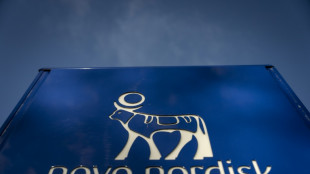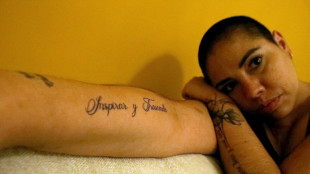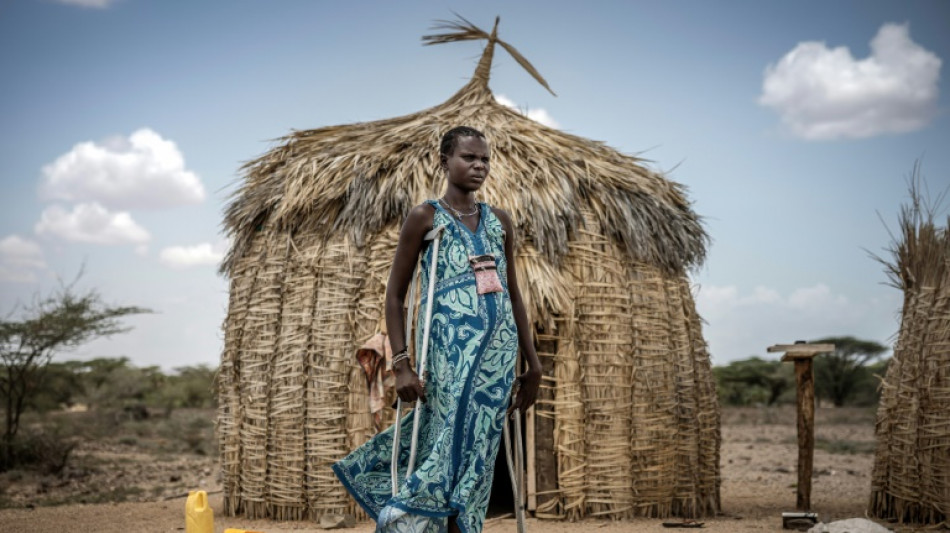
-
 Taiwan's new opposition leader against defence spending hike
Taiwan's new opposition leader against defence spending hike
-
China to exempt some Nexperia chips from export ban

-
 Dodgers hold off Blue Jays 3-1 to force World Series game seven
Dodgers hold off Blue Jays 3-1 to force World Series game seven
-
Crowns, beauty, fried chicken: Korean culture meets diplomacy at APEC

-
 Panama wins canal expansion arbitration against Spanish company
Panama wins canal expansion arbitration against Spanish company
-
Myanmar fireworks festival goers shun politics for tradition

-
 China to exempt some Nexperia orders from export ban
China to exempt some Nexperia orders from export ban
-
Sixers suffer first loss as NBA Cup begins

-
 China's Xi to meet South Korean leader, capping APEC summit
China's Xi to meet South Korean leader, capping APEC summit
-
Japan's Chiba leads after Skate Canada short program

-
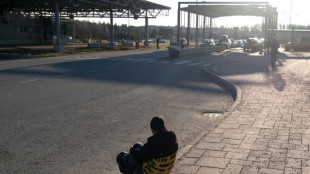 Finland's crackdown on undocumented migrants sparks fear
Finland's crackdown on undocumented migrants sparks fear
-
Climbers test limits at Yosemite, short-staffed by US shutdown
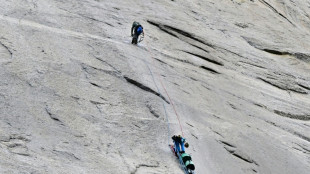
-
 Gstaad gives O'Brien record 21st Breeders' Cup win
Gstaad gives O'Brien record 21st Breeders' Cup win
-
After the tears, anger on Rio's blood-stained streets

-
 Sinner boosts number one bid in Paris, to face Zverev in semis
Sinner boosts number one bid in Paris, to face Zverev in semis
-
Springer back in Toronto lineup as Blue Jays try to close out Dodgers

-
 Nationals make Butera MLB's youngest manager since 1972
Nationals make Butera MLB's youngest manager since 1972
-
Guirassy lifts Dortmund past Augsburg ahead of Man City clash

-
 G7 says it's 'serious' about confronting China's critical mineral dominance
G7 says it's 'serious' about confronting China's critical mineral dominance
-
NFL fines Ravens $100,000 over Jackson injury status report

-
 NBA refs to start using headsets on Saturday
NBA refs to start using headsets on Saturday
-
Trump says Christians in Nigeria face 'existential threat'

-
 French-Turkish actor Tcheky Karyo dies at 72
French-Turkish actor Tcheky Karyo dies at 72
-
Food stamps, the bulwark against hunger for over 40 mn Americans
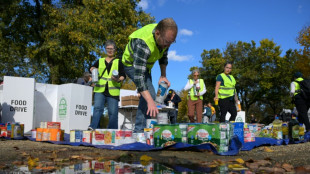
-
 Trump keeps world guessing with shock nuclear test order
Trump keeps world guessing with shock nuclear test order
-
Wall Street stocks rebound on Amazon, Apple earnings

-
 US Fed official backed rate pause because inflation 'too high'
US Fed official backed rate pause because inflation 'too high'
-
Prayers and anthems: welcome to the Trump-era Kennedy Center

-
 Swiss central bank profits boosted by gold price surge
Swiss central bank profits boosted by gold price surge
-
Sinner beats Shelton to boost number one bid in Paris

-
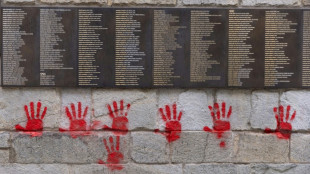 French court jails Bulgarians for up to four years for Holocaust memorial defacement
French court jails Bulgarians for up to four years for Holocaust memorial defacement
-
Profits dip at ExxonMobil, Chevron on lower crude prices

-
 Ashraf and Mirza skittle South Africa as Pakistan win 2nd T20
Ashraf and Mirza skittle South Africa as Pakistan win 2nd T20
-
2,000 trucks stuck in Belarus after Lithuania closes border: association

-
 French lawmakers reject wealth tax proposal in budget debate
French lawmakers reject wealth tax proposal in budget debate
-
Premier League blames European expansion for lack of Boxing Day games

-
 Bublik sets up Auger-Aliassime semi-final at Paris Masters
Bublik sets up Auger-Aliassime semi-final at Paris Masters
-
World's most expensive coffee goes on sale in Dubai at $1,000 a cup

-
 Trump stirs global tensions, confusion with nuclear test order
Trump stirs global tensions, confusion with nuclear test order
-
Panic across US as health insurance costs set to surge

-
 Court eases ban on Russian lugers but Olympic hopes on thin ice
Court eases ban on Russian lugers but Olympic hopes on thin ice
-
England captain Itoje targets Autumn Nations clean sweep

-
 Calmer Sabalenka sets sights on WTA Finals crown
Calmer Sabalenka sets sights on WTA Finals crown
-
Spurs boosted by Romero return for Chelsea clash

-
 Sudan's RSF claims arrests as UN warns of 'horrendous' atrocities in Darfur
Sudan's RSF claims arrests as UN warns of 'horrendous' atrocities in Darfur
-
US says 'non-market' tactics needed to counter China's rare earth dominance

-
 China sends youngest astronaut, mice to space station
China sends youngest astronaut, mice to space station
-
From adored prince to outcast, Andrew's years-long fall from grace

-
 Rodri return fuels Guardiola belief in Man City title challenge
Rodri return fuels Guardiola belief in Man City title challenge
-
China holds send-off ceremony for space station astronauts


Rare bone-eroding disease ruining lives in Kenya's poorest county
Joyce Lokonyi sits on an upturned bucket, fingers weaving palm fronds as the wind pulls her dress to expose the stump of her amputated foot, lost to a little-known disease ravaging Kenya's poorest county.
Mycetoma is a fungal or bacterial infection that enters the body through any open wound, often as tiny as a thorn prick.
Starting as tiny bumps under the skin, it gradually leads to the erosion of tissue, muscles and bone.
The fungal variety is endemic across the so-called "mycetoma belt" -- including Somalia, Sudan, Yemen and northern Kenya -- with funding and research desperately lacking.
Once the disease has reached the bone the only option is amputation.
"I was able to slightly walk, although the disease had eaten all my toes," Lokonyi, 28, told AFP.
She was shunned by the local community, she said.
"They used to say that when you go to someone's home, you will leave traces of the disease where you stand."
She was unable to afford medication despite her husband selling off his goats, and amputation became the only option.
"I accepted because I saw that it was going to kill me," she said, a pair of battered crutches lying on the sand beside her two-year-old daughter.
But she has struggled with the aftermath.
"I have become a good-for-nothing, I can't work, I can't burn charcoal, I can't do anything," she said.
- Neglected -
In Kenya's poorest county, Turkana, around 70 percent of the population lives beneath the poverty line, with healthcare limited and hard to reach.
Mycetoma disproportionately affects rural communities of farmers and herders, according to the Drugs for Neglected Diseases initiative (DNDi), a global NGO.
It was only recognised as a neglected disease by the World Health Organization in 2016. Ignorance and misdiagnosis remain widespread.
"Doctors are not aware of the disease," Borna Nyaoke-Anoke, DNDi's head of mycetoma research, told AFP.
"If you're used to donkeys, you don't start seeing zebras everywhere."
The scale of the problem is difficult to estimate, but Ekiru Kidalio, director of Lodwar Hospital in Turkana, said they "rarely go a week without finding a case".
He added that the local population, 80 percent of which is illiterate, often turns to traditional medicine.
By the time they come to hospital "the condition is already advanced such that it's not easy to reverse".
Medication is also expensive -- treatment takes up to a year and costs as much as $2,000 -- and comes with dizzying side effects.
Diagnosis and treatment are not free under Kenya's overwhelmed health system, leaving patients at the mercy of foreign donors or seeking sums that are unimaginable for subsistence farmers.
- 'Think about the worst' -
In Lodwar Hospital, lab technician John Ekai bends over his microscope and examines a suspected mycetoma sample.
"Mycetoma is a very neglected disease, no-one is giving it attention," he told AFP.
He has become the go-to man for suspected patients, handling his charges with a mischievous sense of humour that puts them at ease.
Ekai has treated more than 100 mycetoma patients in the past year, but has seen only five recoveries, with many simply vanishing back into Turkana's arid plains.
He worries for those who have disappeared: "The mycetoma will grow and grow and maybe... lead to amputation."
During AFP's visit, he examined young mother Jennifer Ekal, 19, who had lived with the disease since she was 11.
"I was in school but I decided to leave because of my foot," she said, showing her swollen and painful extremity, hidden beneath a red-and-white dishcloth.
Four doses of medication a day appeared to be helping, she said.
But as she gathered up her daughter, three-year-old Bianca, she admitted she was worried about the future.
"I do not want to think about the worst."
Z.AbuSaud--SF-PST

